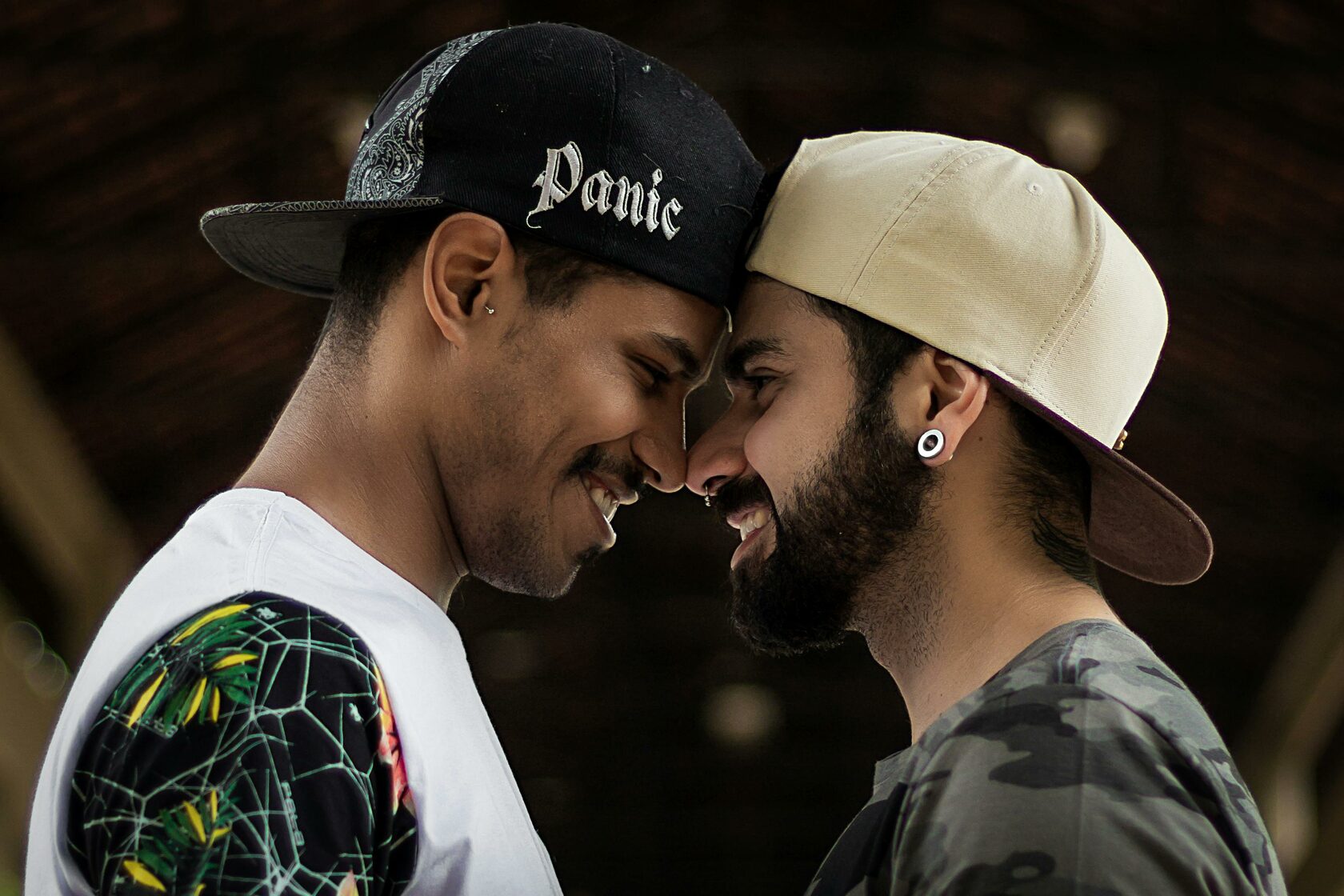Bisexuality is a very common, multifaceted, and often misunderstood aspect of human sexuality. Various surveys and studies suggest that up to 30% of the population in a country openly admits to being bisexual, bicurious, or heteroflexible. Beyond the binary confines of "gay" and "straight," bisexuality encompasses a diverse range of experiences and feelings, challenging conventional notions of desire. Whether you're navigating the complexities of bisexuality in a relationship, seeking to understand a bisexual partner, or simply curious about this vibrant aspect of the LGBTQIA+ community, this exploration promises to shed light on the myths, realities, and nuances of bisexuality, empowering to embrace and celebrate their authentic selves. Flure has prepared a comprehensive guide to the topic to help you learn more about this curious aspect of human attraction.

What is bisexuality?
Bisexuality is a sexual orientation characterized by the potential for emotional, romantic, and/or sexual attraction to people of more than one gender. Bisexuals can be attracted to people who are the same gender as themselves and to those who are different genders. It is important to note that bisexuality itself is a spectrum, and people may experience varying degrees of attraction to other genders.
Bisexuality vs pansexuality
Bisexuality and pansexuality are both sexual orientations that transcend the traditional binary understanding of attraction, yet they are distinct in their nuances and perspectives. Bisexuality, with its roots deeply embedded in the history of the LGBTQIA+ community, typically involves attraction to more than one gender, encompassing a wide range of preferences that can include both similar and different genders to one's own. This spectrum of attraction allows for a diverse expression of desires and relationships, reflecting the complexity of human sexuality.
On the other hand, pansexuality emerges as a more inclusive term, encapsulating the idea of being attracted to others irrespective of their gender identity. Pansexuals often emphasize the importance of personality and emotional connection over gender, highlighting a more fluid and open approach to attraction. This perspective challenges traditional gender norms and encourages a broader understanding of love and desire.
The distinction between bisexuality and pansexuality is not about hierarchy or validity but rather about personal identification and the language people choose to express their unique experiences of attraction. Both orientations contribute to the rich diversity of the LGBTQIA+ community, offering different lenses through which to view and understand human connections and affections. If you want to learn more about the differences between bisexuality and pansexuality, check out this article.
Signs of bisexuality

Exploring the signs and experiences of bisexuality can be a revealing journey, shedding light on the diverse and fluid nature of human attraction. This exploration delves into the distinct manifestations and symptoms of bisexuality in males and in females, offering insights into the rich tapestry of emotions, desires, and connections that define this sexual orientation.
Bisexuality in women
For many women, bisexuality is composed of various shades of attraction and desire. The signs include:
- Romantic or sexual attraction to both men and women
- Enjoying fantasies or dreams about people of different genders
- Having crushes or developing feelings for individuals of more than one gender
Bisexuality in men
Similarly, in men, bisexuality is a journey of exploring attractions beyond traditional boundaries:
- Experiencing attraction to both males and females
- Feeling a connection or desire for relationships with people of different genders
- Engaging in sexual activities or having fantasies involving both men and women
In essence, bisexuality is about acknowledging and embracing the complexity of human attraction. It's a celebration of love and desire in all its forms, transcending the confines of gender and opening up a world of possibilities. Whether you're a woman or a man, recognizing these signs can be a liberating step towards understanding and owning your bisexuality.
Am I bisexual?
If you wonder if you are attracted to men and women, don’t worry: it’s natural for people to have these feelings and thoughts. Understanding your sexuality means deep self-reflection and exploration, where you question and analyze your feelings and attractions. Begin by asking yourself if you've felt drawn to people of various genders, not just physically but emotionally and romantically. It's crucial to acknowledge that sexuality is not static; it's a fluid spectrum that can shift and evolve over time. Embracing this fluidity allows for a more authentic exploration of your desires.
In this process of self-discovery, creating a safe space for your thoughts and feelings to unfold is essential. This might involve journaling, reflecting on past relationships, or even exploring your fantasies and attractions without judgment. It's about giving yourself the freedom to explore the different facets of your sexuality without the pressure to fit into predefined labels or categories.
If uncertainty lingers, reaching out for support can be invaluable. Engaging in open conversations with friends or loved ones who are understanding and supportive can provide new perspectives and insights. Additionally, connecting with LGBTQIA+ communities, whether online or in person, can offer a sense of belonging and a wealth of resources. These communities can provide guidance, support, and reassurance that you are not alone in your journey. Remember, discovering your bisexuality is a personal journey, one that unfolds at your own pace and in your unique way.
Bisexuality myths and misconceptions

- Bisexuality doesn't exist. A stubborn myth that seeks to erase the diversity of human sexuality. Critics often argue that bisexuality is merely a phase or a reluctance to embrace a gay or lesbian identity fully. However, this narrow view fails to capture the true diversity of attraction. Bisexuality is a vibrant and legitimate sexual orientation recognized by both scientific research and the real-life experiences of countless people. It encompasses a broad spectrum of attraction to more than one gender, challenging the binary notion of sexuality. Dismissing bisexuality as non-existent not only erases the identities of bisexual people but also stifles a broader understanding of sexual diversity.
- Bisexuals are just confused. Another baseless belief that undermines the authenticity of bisexuality. This notion falsely portrays bisexuality as a state of indecision or a transitional phase rather than a genuine and stable identity. Bisexual people are not mired in confusion; they possess a clear and valid capacity for attraction to multiple genders. By labeling bisexuality as a mere confusion, society disregards the authentic experiences of bisexual people and reinforces a simplistic, binary view of sexuality.
- Bisexuals are more likely to cheat. An unfounded and harmful stereotype that paints bisexuals as inherently unfaithful. This misconception wrongly assumes that attraction to multiple genders equates to an inability to commit to a monogamous relationship. In reality, sexual orientation has no correlation with a person's likelihood of cheating. Being bisexual does not predispose someone to infidelity any more than being heterosexual or homosexual does. Fidelity and commitment are matters of personal integrity and relationship dynamics, not determined by one's sexual orientation. By perpetuating this myth, society unfairly stigmatizes bisexual people.
How common is bisexuality
Bisexuality is a far more common phenomenon than many might assume. Research indicates that a substantial segment of the world’s population experiences attraction to multiple genders, challenging the traditional binary view of relationships and sexual orientation. These studies reveal that bisexuality is not a fringe aspect of human sexuality but rather a significant and integral part of the spectrum. The fluid nature of bisexuality allows for a wide range of experiences, from those who feel equally attracted to multiple genders to those who experience varying degrees of attraction at different times.
Despite its commonality, the true extent of bisexuality remains somewhat enigmatic, obscured by societal norms and stigma. The reason why today many still hesitate to openly identify as bisexual is the misconceptions and biases, which makes it challenging to capture accurate statistics. For example, bisexual men face more challenges because society perceives them differently compared to bisexual women. Moreover, the definitions of bisexuality can vary, adding another layer of complexity to its quantification. As society continues to evolve in its understanding and acceptance of diverse sexual orientations, more people will likely feel comfortable embracing and expressing their bisexuality.
Bottom line
In the vibrant spectrum of human sexuality, bisexuality stands as a testament to the complexity and diversity of our desires and attractions. It challenges conventional norms and invites us to embrace a more inclusive and nuanced understanding of love and relationships. As we continue to break down myths and misconceptions, we pave the way for a more accepting and open-minded society where people are free to explore and express their authentic selves without fear or judgment.
Embracing bisexuality not only enriches our individual experiences but also strengthens the fabric of our communities by fostering empathy and understanding. As we move forward, let us celebrate the beauty of bisexuality and the myriad ways in which it manifests in our lives. By doing so, we affirm the inherent worth and dignity of every person, regardless of their sexual orientation, and contribute to a world that cherishes diversity in all its forms.
Flure isn’t just a dating app—it’s your gateway to meaningful connections and unforgettable experiences. Whether you’re seeking new friendships, someone special, or just exploring, Flure makes it easy to find your kind of people. Built on trust, safety, and authenticity, Flure turns your online dating into something truly magical. Ready to make connections that matter? Join Flure today and see where it takes you!








